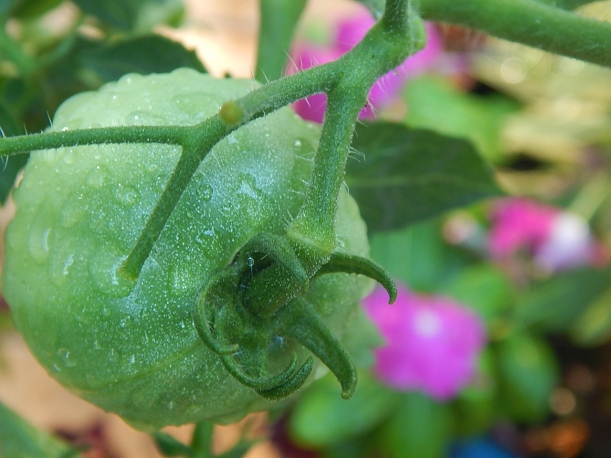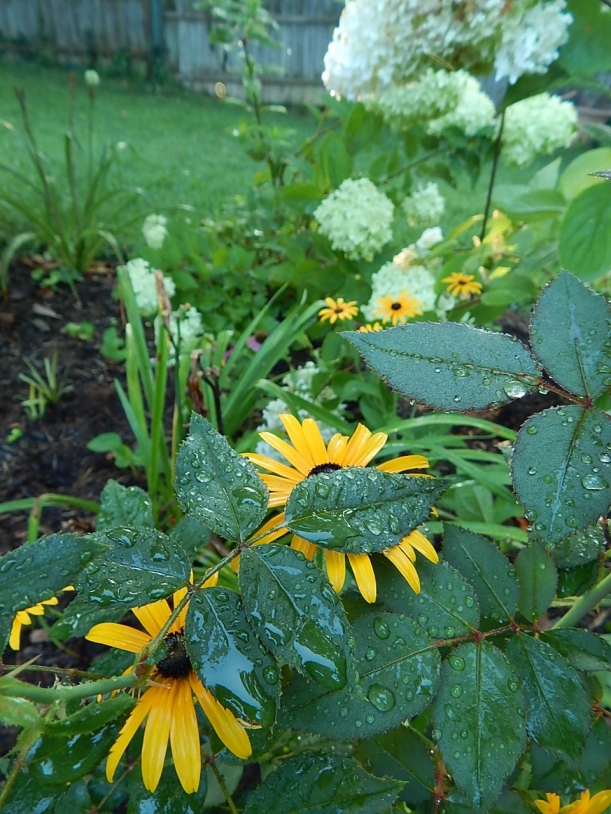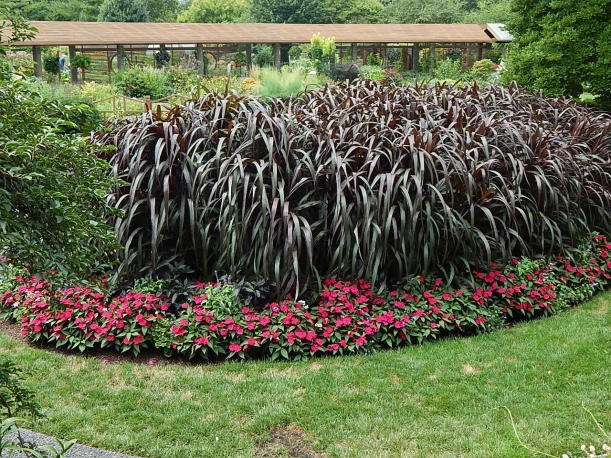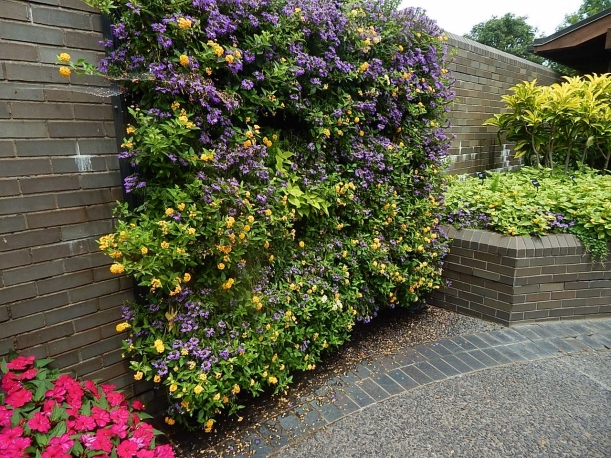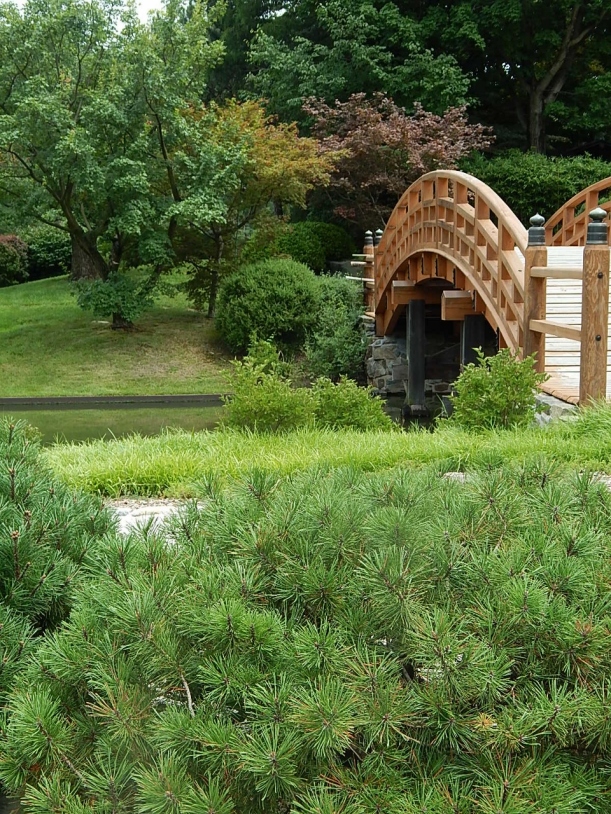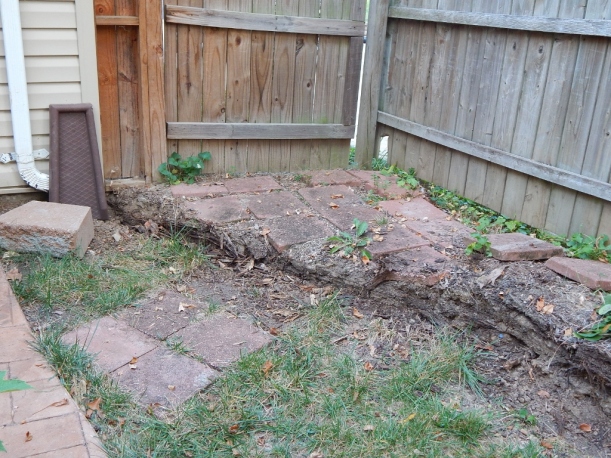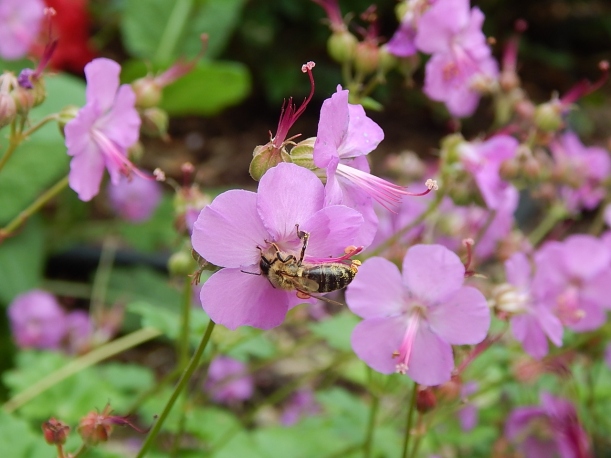Monthly Archives: July 2015
The Morning Garden After a Rain
Rain-soaked petals, leaves and grasses were inspirational during this morning’s coffee stroll.
I love how raindrops cling to plants. Or is it the other way around? Either way, morning light is my favorite time to take pictures. It’s a challenge to get the lighting right and I am more often disappointed with my photos than I am pleased.
Everything appears refreshed after a nice soaking rain. Don’t be fooled, though, the humidity is unbearably high and I had to repeatedly wipe off the foggy lens. In fact, the outsides of the windows were also foggy this morning. Nothing refreshing about that at all.
I have to add one more rose picture…
The succulents look wonderful rain soaked as well. I have been enjoying my first succulent container and the variety of colors, shapes and textures.
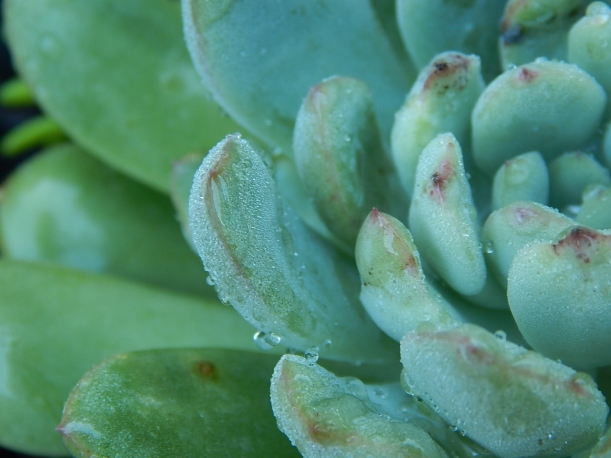
The grayish blue succulent (graptopetalum paraguayense) is known as ghost plant. I call it wonderful.

The jade plant in this container has received a lot of moisture this summer but does not seem not be suffering from it.
The “Little Lamb” and “Little Lime” hydrangeas are in full bloom. Their heavy blooms have been weighed down by all the heavy rains. But they are lovely nonetheless.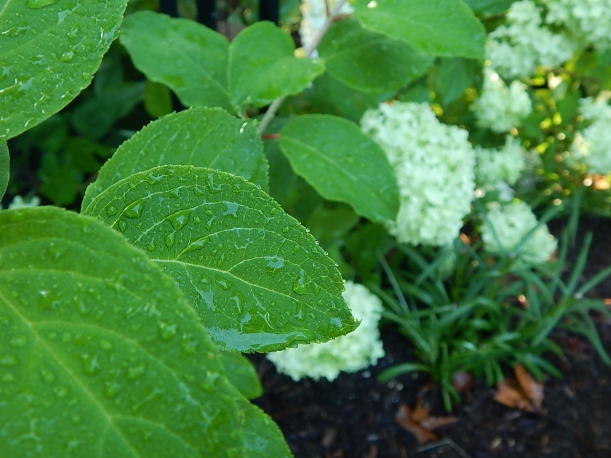 This summer marks my first go around with Euphorbia; this “Ascot Rainbow” is sharing space in a large, bright blue pot with deep purple coleus and hot pink vinca and will find a permanent place in the garden this fall.
This summer marks my first go around with Euphorbia; this “Ascot Rainbow” is sharing space in a large, bright blue pot with deep purple coleus and hot pink vinca and will find a permanent place in the garden this fall.
A Sunday Stroll Through the Missouri Botanical Garden in July
 Gardener or not, a visit to the Missouri Botanical Garden is a pleasant way to while away an afternoon. Today’s overcast skies were perfect for viewing all the vibrant blooms.
Gardener or not, a visit to the Missouri Botanical Garden is a pleasant way to while away an afternoon. Today’s overcast skies were perfect for viewing all the vibrant blooms.
Right now my favorite area is the Kemper Home Gardening Center and its associated demonstration gardens. Here you can see all sorts of containers, butterfly gardens, kitchen gardens and the All American Selections demonstration. It’s a great place for inspiration and ideas.
If there’s one theme I’d give the garden this summer it would be lush and high-contrast. Plantings with hot shades of purple, green, yellow and orange that contrast with dark hues of black like the giant grass below are common. I don’t know the name of this tall purple grass paired with vinca but it’s spectacular.
Green and black elephant ears surround a mass bed of lipstick pink vinca. As you can see, vinca grows quite well in our summer heat. So do the elephant ears. Keeping to the purple and black theme, how about these tomatoes? They’re called Indigo Rose tomatoes. I’d never seen an artichoke growing until today.
Keeping to the purple and black theme, how about these tomatoes? They’re called Indigo Rose tomatoes. I’d never seen an artichoke growing until today.
I’ve seen lots of posts on Pinterest for pallet gardens. This one is on steroids.
Coleus is predominant in many groupings. Here maroon coleus–accented with chartreuse coleus–rises above coral toned vinca. This is one side of the entrance to the children’s playground and you pass it on the Kemper Center. The large haybasket probably weighs a lot and such a structure would most likely pull down my fence. Here it has plenty of support.

All is not pink, purple and black in the garden. The garden designers are far more versatile. This collection of black eye Susans and ornamental millet is an interesting combination of form and texture. I like the cat-tail bloom on the millet. I’ve not seen this in a nursery here but would try it in a container next year.
Of course, there are lots of black eyed Susan cultivars in the cutting garden.
The Japanese garden with its tranquil lake and gently sloping hills lies beyond the demonstration gardens in the further reaches of the garden. It’s a nice place to sit and relax or feed the carp. In spring, blooming azaleas and dogwoods make this section of the garden a popular destination. Here you can enjoy a large selection of pines, dogwoods, barberries and maples.
Winding my way back to main entrance, and continuing on the tranquil vibe, I made a leisurely stop at the Bakewell Ottoman Garden, a small walled garden planted in the gardening tradition of the Ottomans. Istanbul, which was home to the Imperial capital of the Ottoman Empire, and St. Louis lie on the roughly the same latitude, which means we can grow a lot of the same plants.
Apparently there are no surviving types of this style garden, which was developed between the 16th and 19th centuries. The plantings here are primarily naturalized or native to Turkey. Hard fruits such as pomegranate and Meyer lemons are planted in pots throughout the garden. Currently, alternating pink and white beds of dianthus are bordered by germander but the garden is well known for its Turkish tulip and bulb display in the spring.
Oleander and columbine line one wall of the garden. The fountain is inviting and looks refreshing on a hot summer day.
A mass of shasta daisies sway in the breeze. 
Although I live just 15 minutes from this city jewel, I don’t get there near enough. Today, I am glad I took the time
Ah Yes Moments in 2015
 If you’re like me, it’s easy to look in the rear view mirror and lament what went wrong during the previous season and think about all the “could ofs,” “should ofs” and “only ifs” as I plan for the next.
If you’re like me, it’s easy to look in the rear view mirror and lament what went wrong during the previous season and think about all the “could ofs,” “should ofs” and “only ifs” as I plan for the next.
Last year was not the best year for my back yard garden. The tremendous amount of rain we had in June took a toll on the way the plants performed, and it seemed like there was never enough time to accomplish what needed to be done. But, there were plenty of highlights to year 4 in my gardens. Here are few:
1. Improving the Entrance into the Yard. Visitors who came through the gate in 2014 were met with a raised bed supported by rotting railroad ties whose 5-inch nail spikes stuck out. The step down into the yard was deep, making it awkward and potentially dangerous. I said goodbye to the ties and installed interlocking stone that coordinates with the stamped concrete patio. An added step provides a more natural distance down into the yard.
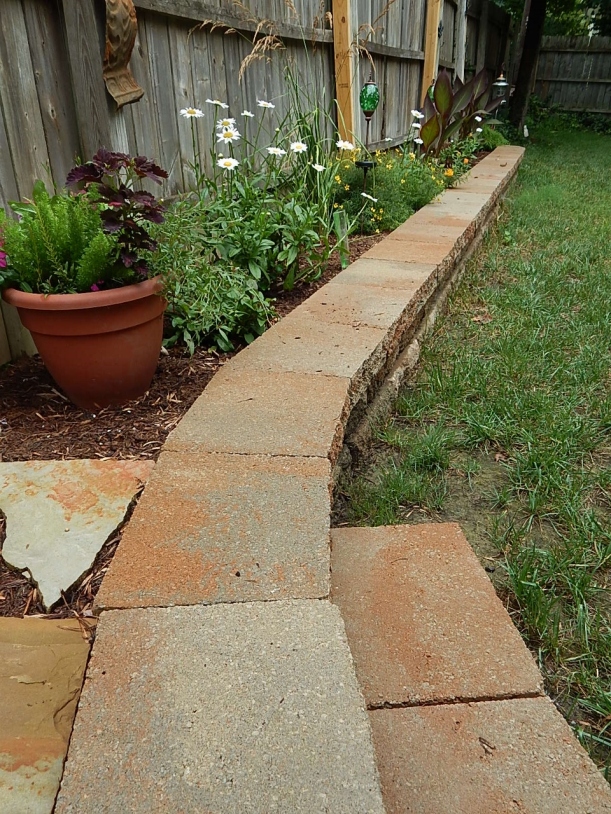
The addition of a step off of the raised area, makes stepping into the yard easier. The shasta daisies are transplants from a friend, as are the cannas.
2. Attending the Garden Bloggers Fling in Toronto. Okay, this is technically not in my garden, but I’ll extol the virtues of expanding your network to anyone who enjoys gardening. First, who doesn’t like a garden tour? The Fling was a 3-day-plus extravaganza of garden tours. This experience allowed me to learn first-hand from other gardeners–hobbyists to the pros–what they are doing in their gardens and public spaces. It was an outstanding way to expand my thoughts on gardening and meet many of the people behind the blogs I so enjoy. The Fling has me thinking more seriously about natural resources conservation, starting a vegetable garden, composting and the joys of connecting with those who share a common passion.
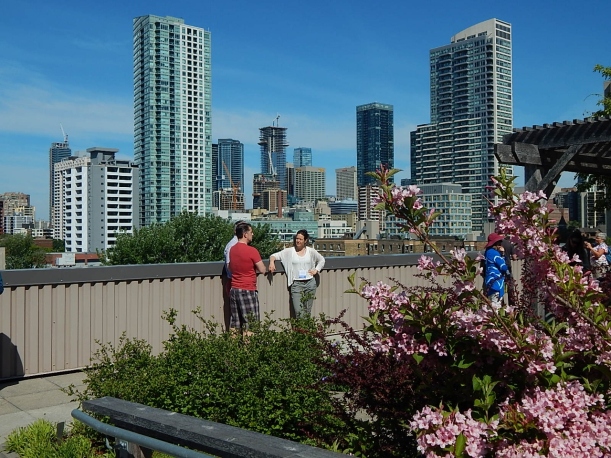
A rooftop garden overlooking the Toronto city skyline. The Garden Fling provided multiple venues to learn about gardening, sustainability, conservation and plant selection.
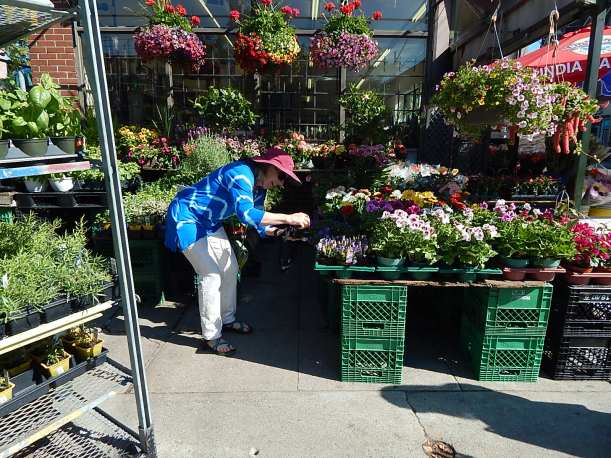
Claire Jones, author of the Garden Diaries blog, takes time to appreciate the offerings at a city nursery in Toronto.
3. Installing a new bed along the south fence. Outside of raising children, nothing teaches patience like gardening. I may be planning and planting for four-season beauty, but each garden season (spring/summer/fall) is just one cycle and it took me several cycles to finally get to the south fence. I enjoyed sitting on the patio looking at this lovely, lovely shade garden.
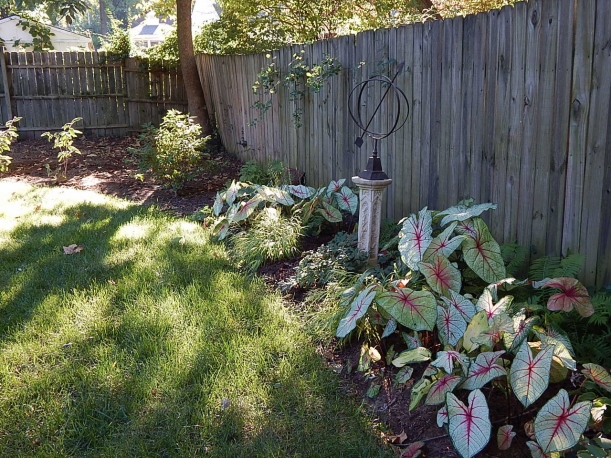
The caladium take center stage in the bed in September. The honeysuckle trailing over the fence from my neighbor’s yard was a welcome guest.

Freshly mulched, the south fence bed in June. Japanese forest grass, heuchera various fern, hosta, creeping Jenny, solomon seal and astilbe provided lots to look at all season.
4. Edging the Beds. What a difference a seemingly small task makes in giving a garden bed a finished look. I considered installing metal edging, but instead opted for the back labor (someone else’s, as I hired this job out) to cut a nice edge around my main garden beds.

3. Plant division. Want to save a little money? Get more of a plant you just love, love, love? Fill in a space in the garden bed? Share with a good friend? Improve your garden design and color balance? Two words: Plant division.
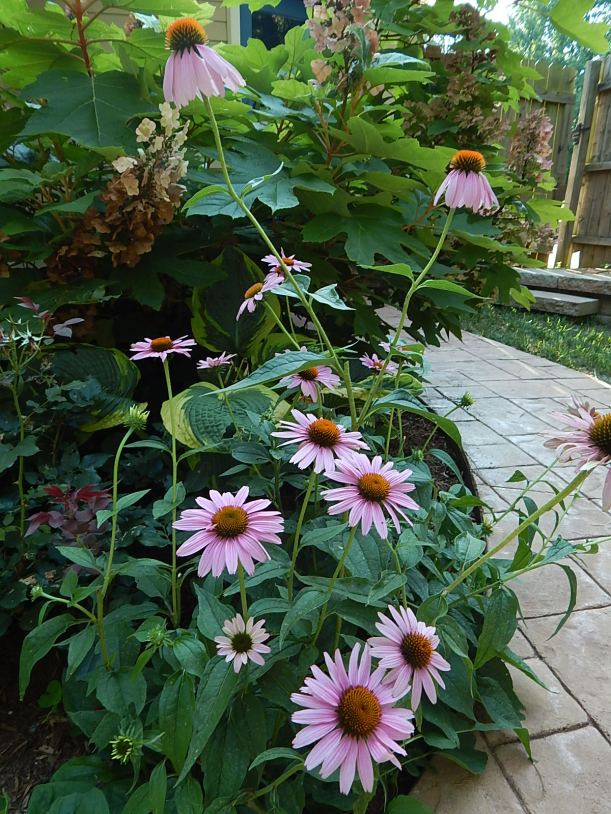
First purchased from the Webster Groves Women’s Garden Club plant sale, these purple coneflower have been divided and added throughout the gardens. Self-seeders, they quickly and easily multiply.
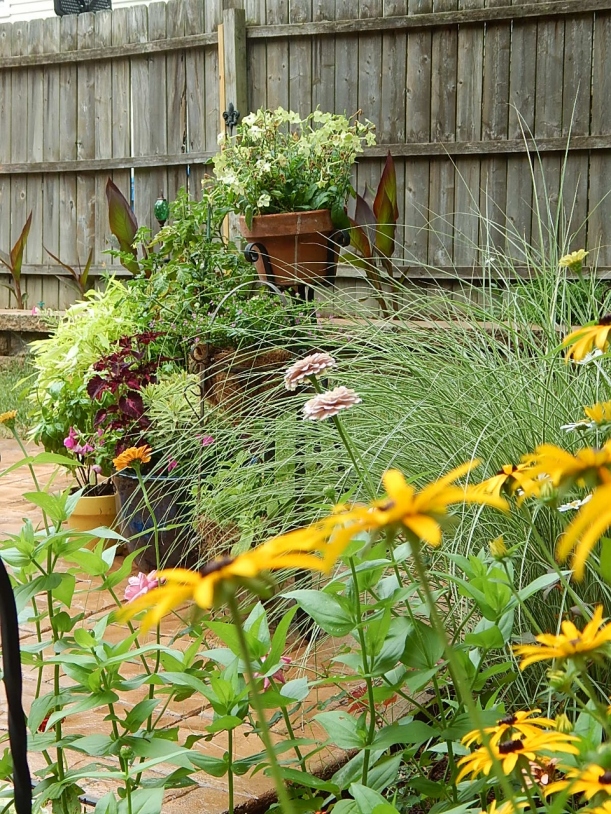
The black-eyed Susans in the foreground have three homes in my yard. Profusive in Zone 6, I gladly divide them to share with friends.
Easy Container Gardening Using Succulents
 It started with a thank you gift: a small jade plant from my dear ones for watching my granddaughter. I dashed off to the store to buy a cute container. Instead I came home with five new varieties. I justified this purchase by reusing an old container I had laying about. Why plant just one lonely jade plant in a container, when I can add others and enjoy the container all that much more?
It started with a thank you gift: a small jade plant from my dear ones for watching my granddaughter. I dashed off to the store to buy a cute container. Instead I came home with five new varieties. I justified this purchase by reusing an old container I had laying about. Why plant just one lonely jade plant in a container, when I can add others and enjoy the container all that much more?
After all that’s the basic premise for adding multiple annuals when planting containers. Sometimes the obvious whisks past me but fortunately, not that day.
This may not have been the ideal year to begin my succulent garden. I planted the container in June and we promptly had 19 inches of rain that month. Fortunately–that is, before a storm came and destroyed it–my red table umbrella provided shelter from the raindrops when I was astute enough to move the container.
This small garden has flourished. I attribute most of that to using the appropriate soil. Each year I am more cognizant of how important the soil is to successful gardens. I bought a mix specifically designed for succulents. The jade in the center may have received more moisture than it ideally needs due to the excessive rain in June, but it seems very happy and has more than doubled in size.
When looking at the photo above, the jade (Crassula spp.) is surrounded container by five varieties. Starting from the front center and moving left, are: string of pearls (senecio rowleyanus); ghost plant (graptopetalum paraguayense), princess pine (crassula mucosa pseudolycopodiodes),topsy turvy (echeveria) and elephant plant (crassula portulacaria afra).
I will bring this inside for winter enjoyment and have already staked out the perfect location in my home office. Do you enjoy a succulent garden? And do you have any tips for bringing it in from the outside?










